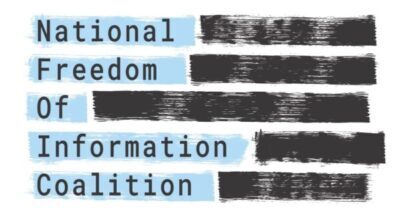|
From the Federation of American Scientists:
(Nov 15, 2012) – President Obama’s declared goal of making his “the most transparent Administration in history” generated successive waves of enthusiasm, perplexity, frustration, and mockery as public expectations of increased openness and accountability were lifted sky high and then — often, not always — thwarted.
Every Administration including this one presides over the release of more government information than did its predecessors, if only because more information is created with the passage of time and there is more that can be released. But President Obama seemed to promise more than this. What was it?
Part of the problem is definitional.
“Although there are laws that affect access to government information, there is no single definition for what constitutes transparency– nor is there an agreed upon way to measure it,” observes a new report from the Congressional Research Service.
“Transparency may be defined as the disclosure of government information and its use by the public,” the report suggests. “Transparency, under this definition, requires a public that can access, understand, and use the information it receives from the federal government. This report first assesses the meaning of transparency and discusses its scholarly and practical definitions. It also provides an analysis of the concept of transparency, with a focus on federal government transparency in the executive branch.”
“This report subsequently examines the statutes, initiatives, requirements, and other actions that make information more available to the public or protect it from public release. It also examines transparency and secrecy from the standpoint of how the public accesses government information, and whether the release of government data and information may make operation of the federal government more or, counter-intuitively, less transparent. Finally, this report analyzes whether existing transparency initiatives are effective in reaching their stated goals.”
The CRS report makes only passing mention of national security secrecy and does not address efforts to reduce the scope and application of secrecy in the national security realm. It also does not consider in any depth how technological changes are affecting government information policy, perturbing or mooting longstanding official positions on disclosure and non-disclosure. Nor does it explore political obstacles to greater transparency (such as the congressional policy that bars CRS publication of this very report on transparency).
Read the complete report (PDF/450KB) from the Congressional Research Service
Obama Administration Secrecy/Transparency Scorecard
From Collaboration on Government Secrecy:
On January 20, 2009, the Administration of President Barack Obama began to keep his presidential campaign commitment to create "the most transparent administration in history," something that would stand in stark contrast to the preceding Administration of George W. Bush. See, e.g., "Tell Us More," Legal Times (Dec. 8, 2008). This required prompt and palpable change in a range of subject areas — including Freedom of Information Act policy and implementation; the use of the state secrets privilege; national security classification; the proliferation of "pseudosecrecy"; and the use of advanced technologies to foster greater transparency and information dissemination in myriad ways, under the rubric of what has been called "E-Government." See, e.g., The Nature of Government Secrecy, 26 Gov't Info. Quarterly 305 (2009). Despite getting off to a stunningly positive start, however, the Obama Administration encountered surprising difficulty in meeting the commensurately high expectations of the openness-in-government community, as it badly stumbled in several key respects and struggled with the practicalities of bringing about change — all of which has been the cause of considerable concern. See, e.g., Sunshine Not So Bright: FOIA Implementation Lags Behind, 34 Admin. & Reg. Law News 5 (Summer 2009). The detailed assessments below, undertaken by CGS for the Obama Administration's first two years, are indicative of what remains to be done during its remaining years. See also "Transparency in the Obama Administration — A Second-Year Assessment."
In time, however, it can be expected that the Obama Administration will succeed in tipping the balance from secrecy to transparency — either despite or because of the overwhelming reliance that it initially has placed on technological advances over the timely implementation of substantive policy changes — thereby delivering on the strong promise for open government that it holds.
See the scorecard (HTML) from the Collaboration on Government Secrecy
CGS FOIA Community Conference, "Transparency in the Obama Administration — A Fourth-Year Assessment," Jan. 17, 2013
To find more events for FOI, FOIA, open government and transparency goings-on, please visit our FOIA Events Calendar.
